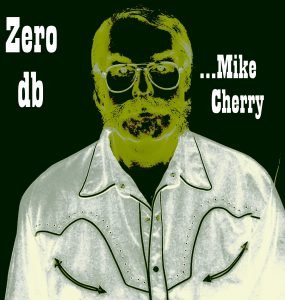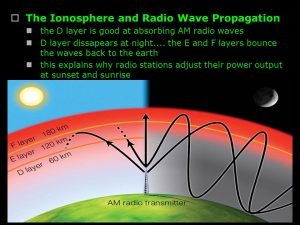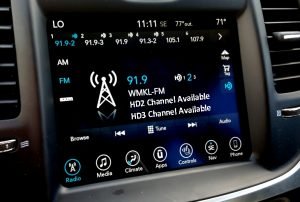
In our ongoing series examining the state of AM radio today, we continue with our review & critiques of recent attempts to ‘revitalize’ the dying medium. Much of what is being done by regulators, the powerful NAB & broadcasters themselves are working against retention of AM as a viable & profitable means of reaching listeners. The FCC has recently introduced rulemaking & proposals to eliminate nigh-time protection of the high-powered, dominant Class A AM broadcasters using 50 kW “clear” & “semi” clear channels that at one time were the exclusive occupants of certain frequencies, or shared with a minimum of one or two other high powered transmissions. The change began in the 1970’s & to some extent we can thank our regions very own Wally Nelskog, the late owner of KIXI & a well-respected broadcaster in our state for many decades. It was Wally who challenged the notion that the dominant clear channel frequencies were somehow the exclusive “property” of a handful of broadcasters & challenged the FCC on this issue & eventually won. Wally’s KIXI was stuck on 910 kHz with 1 kW plus a quirk of AM receiver design that sometimes put a whistle or hum on this particular frequency. Wally sought & won the opportunity to move to clear channel 880 kHz with 50kW much to the dismay of dominant WCBS New York & KRVN Lexington NE who had the channel to themselves covering all 48 lower states between them. While breaking up the monopolies of the ‘clears’ the FCC in turn went too far by over-licensing these frequencies. Nonetheless, so far many of these dominant stations continue to cover much of rural America & Canada where residents often do not have the luxury of tuning in a multitude of local FM signals or have no signals available at all.

The most recent proposal would eliminate night time protection of these Class A’s & allow more of the regional & local stations to increase power to overcome interference, or to increase beyond under-100 watt flea power non-coverage restrictions. There are strong arguments both for & against this proposal. This reporter is against this newest misguided rulemaking. There is strong argument to retain the power of Class A’s to reach the rural US predominantly to provide EAS & other emergency or urgent broadcasts. While society becomes more & more reliant on the Internet, wireless & hand-held devices to provide emergency info, news, music & entertainment, it would be foolish to think that a mass interruption or failure of online could not occur rendering the Internet useless – perhaps at a time of critical importance. I could be accused of conspiracy theories, pie-in-the-sky delusions or paranoia for stating this. Give thought however, to what may happen if America was under attack from a hostile nation or militants. Is it foolish to imagine a mass attack on our Internet abilities by sophisticated hacking by Russian, Chinese, Korean or Islamic extremists? Could politically motivated hackers within our nation perpetrate such horrors? Imagining these occurences presents a strong argument for the need for even higher powered AM signals on channels not cluttered with local or regional signals. To counter such arguments, AM broadcast engineer Warren Allgyer editorialized in an edition of ‘Radio World’: “1. The economic loss from the proposed rulemaking to Class A stations is trivial compared to the revenue gain realized by smaller, local stations. 2. A listener within the daytime contour of a local AM station should not, and cannot, be considered a “loyal listener” of a distant station on the same frequency. 3. The EAS system best serves listeners of local stations rather than distant signals. Allgyer goes on to argue: “Most of these “lost potential skywave” listeners actually reside within the groundwave contours of local Class C and D stations that are not currently allowed to serve them at night due to the protection provided the “big boys.” Allowing these stations to serve their local communities during night time hours will generate heretofore-unobtainable revenue in these markets.” While seemingly convincing, he fails to note that the majority of stations in these markets are NOT providing local, live service but instead air syndicated content – mostly talk shows – from a handful of syndicators. It’s actually possible at night to tune in to numerous AM frequencies that have this eerie echo/reverb delay sound which is created by multiple stations on a given frequency airing the SAME syndicated show at the SAME time! The microsecond delays or advances of the audio feed create this funky sounding echo. How do listeners throughout the nation get better AM service with multiple signals carrying the same program. I’ll reiterate that is a poorly thought out proposal that will add more interference & clutter to the already over saturated AM band. Unless small & medium market AM stations are willing to return to the days of live programming at night, arguments in favor of this proposal don’t cut it.

The other revitalization salvation touted is the move to HD. I’ve already editorialized much on this subject, including the pros & cons for AM broadcasters. While I applaud the efforts of visionary broadcasters looking forward to an all-digital HD platform for AM broadcasting, I really have to question whether the cost & efforts are worth it. One of these progressive thinking broadcasters is S+R Broadcasting’s Andy Skotdahl, owner of 1380 KRKO & 1520 KKXA. Against the odds, his company took a huge gamble & launched a brand-new AM signal in our market at a time when AM was considered a dying medium. Andy equipped the new facility with the latest state-of-the-art digital transmission equipment & as a few others have done, recieived permission to try an all-digital broadcast while dropping the traditional analog AM signal. Results were positive & the small amount of listener so equipped had good things to say. I’ve reported on a station near Wash. DC currently broadcasting a digital-only signal – Hubbard’s WWFD but have seen little in the way of stated results or statistics to evaluate how this experiment is going. Central Texas broadcaster Bryan Broadcasting Corp has filed a proposed rulemaking to the FCC asking for implementation of all-digital AM transmission. I promise to provide future news of this as it becomes available.

A number of statistics are pointing the fact that radio is becoming a mostly mobile listening experience & that on-air broadcasters in future will need to concentrate on serving the motoring public. HD radio is very much a part of that. However, as I’ve written in previous blogs,FCC & the broadcasters themselves are failing to promote this superior transmission & are doing little to promote their new, secondary HD programming. As a result listening remains low. It’s even lower for home radio listeners who are not flocking out to stores in numbers to acquire the latest HD home receivers, which have all but vanished from the consumer landscape. While I count myself as a casual listener to “Class Country KXA” – sorry Andy, but I’m not about to drop some big bucks into an AM digital home receiver just to hear my favorite Loretta Lynn or Merle Haggard tunes. Couple this with the fact that many new cars no longer come with AM radio included in their entertainment systems. This is especially true for the new ‘hybrids’ & all-electric vehicles that encounter severe interference problems to AM reception resulting from the battery charging systems & on-board computer vehicle controls. This has me pondering whether all-digital AM HD radio will be a non-starter & whether AM broadcasters would be best to maintain the status quo broadcasting in analog or at the least – analog/HD hybrid signals. I have discussed the disadvantages of the hybrid method previously. It’s far too late to seriously look at switching to a DAB+ transmission on separate, dedicated frequencies, or adopting the superior DRM method friendly to AM signals as is being rapidly implemented in other parts of our planet.

AM Revitalization may or may not provide a better future for AM broadcasters. It is certainly apparent though, that many missed opportunities have come & gone. AM stations looking the the FCC or umbrella associations & lobby groups will fail to find relief from many of these implemented or proposed polices & must look within to survive in today’s broadcasting landscape. I’ll continue to explore aspects of AM Radio’s struggle to remain a viable, relevant form of media, whether on a financial, technical or programming basis. This is one reporter who wishes to see the AM band continue as a choice of media!

Some comments may be held for moderation. (New users)